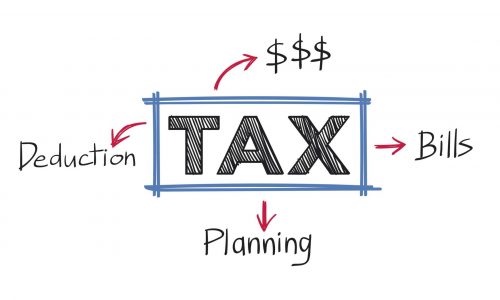What are the Types of Income Tax Notices?
Introduction
We are frequently concerned when we receive Income Tax notices, yet these notices always serve a purpose. Information is included in some income tax notices, such as a notice of a tax liability under section 143(1) or information for a section 142(1) inquiry. Others, on the other hand, notify that an audit is required, etc. This page will provide an overview of the most important income tax notices.
What Are the Possible Causes of Receiving an Income Tax Notice?
Income tax notices are issued for a variety of reasons under various parts of the Income Tax Act. Here’s a rundown of the most typical reasons you might get an Income Tax Notice:
- No ITR filing.
- The ITR return filing delay.
- Incomplete ITR filing.
- Failure to disclose all sources of income in your ITR.
- Tax fines, interest, and other costs owed to the IT Department.
- If your ITR is picked for review, it will be examined.
- The tax refund you receive can be used to offset any outstanding tax debts.
- In the event of a disagreement in the amount of loss reported while completing your ITR.

What Are the Various Types of Income Tax Notices in India?
Section 142(1): The assessing officer issues a notice under section 142 (1) in two instances. To begin, the officer may request further information and documentation pertaining to your tax filings. Second, if the officer demands that the return be filed even though it has not yet been submitted. If you ignore the Section 142(1) notification, you risk receiving a 10,000 INR fine, a year in jail, or both.
Section 139(9): If the AO believes you have filed an incorrect income tax return, he must notify you under this section. Errors include missing information, utilising the incorrect ITR form, submitting an incomplete return, and so forth. The officer would also make references and recommend a solution to the tax return error. You have 15 days to reply to the notification. If you do not react, your ITR will be rejected.
Section 148: This notification is provided when the assessing officer (AO) has grounds to think that a taxpayer has submitted his ITR on a lower income or has not submitted as required by law. The time restriction for issuing the notice under this clause is determined by the amount and type of revenue evaded.
Section 156: A notification under Section 156 would be sent if there is any form of demand, such as a penalty, fine, tax, or any other sum owed to the income tax department by the taxpayer. The taxpayer must pay the outstanding amount within 30 days after receiving the notification, commonly known as a demand notice.
Section 143(1): After you file and validate your ITRs, the tax department processes them electronically. In accordance with Section 143(1), the tax department notifies all taxpayers following this initial evaluation. It includes information on whether there is an additional tax liability or refund, as well as whether the loss amount mentioned in the return should be increased or decreased, and whether the return was successfully submitted.
Section 143(2) for scrutiny evaluation u/s 143(3): If the tax department decides to review the taxpayer’s ITR, a Notice under Section 143(2) will be issued to the taxpayer. The assessing officer sends this letter within six months of the end of the fiscal year in which the return is filed. After receiving the notice, the taxpayer must complete the income tax department questionnaire and provide all additional needed documentation.
Section 131: If the assessing officer thinks the taxpayer is hiding all or part of his income, he may issue a notice in accordance with this clause. The notification can be used to inquire about the taxpayer’s accounting records and to analyse the taxpayer’s revenue.
Section 245: The assessing officer (AO) is entitled to this notification under Section 245 of the Income Tax Act if it is believed that you had a tax liability in the previous fiscal year and could not have paid the tax liability in order to get the current fiscal year’s tax refund. You must react within 30 days, or the AO will view your failure to answer as authorization to adjust the tax refund with previous tax liabilities and release your refunds after such adjustments.
Conclusion
In conclusion, there are various forms of income tax notices that taxpayers may receive from the tax authorities. These include notices for scrutiny assessment, demand for payment, notices for non-filing of tax returns, notices for mismatched income or deductions, and notices for non-compliance or non-disclosure of assets. To guarantee compliance with tax regulations and avoid penalties, taxpayers must carefully review and respond to these notices within the prescribed time frame, obtaining expert help if necessary.



